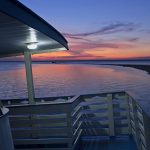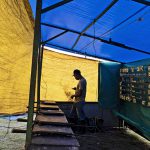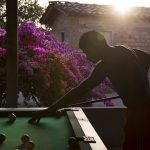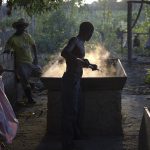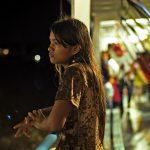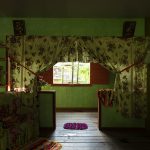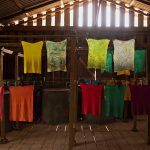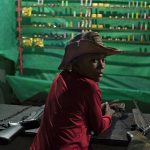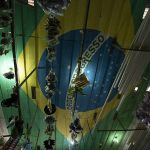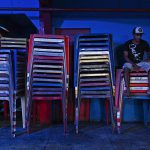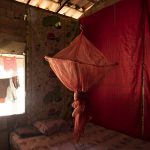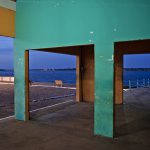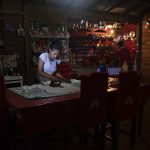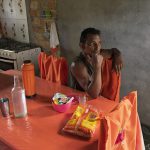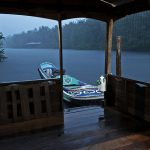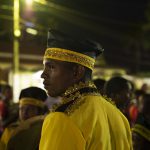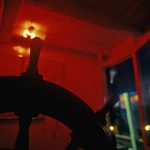Galeria Leme/AD is pleased to announce the fourth solo exhibition of the photographer Luiz Braga in its space. The exhibition is accompanied by a text by Tadeu Chiarelli.
Luiz Braga: interiors, portraits [and landscapes]
Tadeu Chiarelli
“What directs my observation of Luiz Braga’s photographs? Firstly, the photographer’s treatment of light: what really stands out in his work, it seems to me, is the manner with which he constructs his images through the contrast (sometimes subtle, sometimes sharp) between artificial and natural light, a feature which gives rise to a spectrum of different colors capable of prompting sensations of familiarity and strangeness. This is the process through which Braga denatures photographic “truth” – when he denounces its artificial dimension.
For years the artist has been deepening his inquiry into the photographic image, with emphasis on its false construction. At a first stage, his efforts towards it are notable – by means of a drastic “paring down” of the objects which are to be photographed, reducing them to “pure” and decontextualized forms which underscore the interior logic of the chosen framing, removing from them the more notable elements of time and place. Camburões coloridos, 1976, is an example. What defines this image’s authenticity isn’t its context: it matters little whether it was taken in Belém do Pará or Palestinian Bethlehem – what really matters, in the final result, is the internal coherence of the forms in relation to light and color. Was it shot in Belém do Pará? This is an “off-frame” detail, a curiosity for those who enjoy spinning narratives around an image.
In the course of his career as a photographer, Braga also experimented with other strategies, in the sense of denaturing “photographic veracity”, one of which was the rejection of industry instructions for the use of certain types of film. Árvore em Mosqueiro (Tree by a Mosque), 1991, is a fine example of this process: produced in earnest disobedience of industry instructions, the image before us does not offer the experience of “northern colors”, nor the “light of the Mosque” etc., what we experience instead is the light and the color of photographic film itself, instrumentalized by the artist in so that the image gains autonomy over the referent.
All of this, however, predated the advent and dissemination of digital photography. Once adapted to this new technology, Braga sought, as was expected, to make full use of the possibilities offered by this new medium, incorporating them into his poetics. Thus, if the artist had obtained the effects that are so characteristic of his images by means of “undisciplined” use of the best films sold the world round, he will, from then on, seek to find similar results in the manipulation of the digital camera’s previously established tools.
The images Braga produced by the free use of the night vision feature became well-known, especially those that transformed the landscape of Pará into gelid scenes frozen in time – extremely ironic parodies of the incessant search for the “very typical”, with which many photographers still hope to adjectivize their productions relative to a profound and abjectly-destitute Brasil. Igarapé do Macaco, 2007, is a perfect example of this moment: a “typical” northern landscape (is there anything more “northern” than an igarapé [a narrow, shallow, river tributary in the Amazon]?) transformed into a frozen wasteland, reminiscent of a polar expedition, dream segueing into nightmare. Paradise turned dystopia, recovering, thus – in a unique manner –, Braga’s need for distancing himself from the referent, complicating the perseverance of the spectator’s belief in the myth of photographic truth.
Luiz Braga: interiors, portraits [and landscapes] is set against the artist’s other axis of production, in which the discreet manipulation of the photographic medium is present only in order to accentuate the artist’s ability to operate with light and color, in situations which are sometimes subtle, sometimes sharp. The photographs that were chosen to highlight these characteristics are interior scenes and portraits, for it is precisely in these kinds of photographs that the sense of communion between photographer and individual, or photographer and the place he portrays, reaches one of the high points in Braga’s career.
The interior scenes in this exhibit are those in which people (when they are present) were captured during the course of some activity or other (or simply at rest), in a more somber and sheltered foreground, while the external environment is full of light. In the empty scenes, paradoxically, the presence of these inhabitants permeates every detail: the arrangement of objects, the attention to the smallest details, all of it recreated by light, by the saturation of this or that area of the image, revealing, once again, the photographer’s empathy with his surroundings and its occupants.
Such empathy can also be found in the portraits: in these, the character always emerges wrapped in grandiose solemnity, even when he or she is absorbed in some form of action, or is deep in thought. By portraying these characters, Braga in a sense embraces them as a sign of respect and communion. Nevertheless, even if his wish for unity tends to show through in every portrait, Braga, it seems, never forgets that the image is produced not by the mere capturing of the real, or of his feelings towards what or who is depicted, but by the recreation of all these phenomena as language.
I believe that, in this exhibition, the artist is “caught” or “spotted” (to use a photographic metaphor) at another high point of his career, at a moment in which his skills shine through with mastery, resulting from the sheer amount of work he has put in, as well as his own critical view on the photographic image and his empathy for those he depicts. Such mastery, however, does not indicate the crystallization of procedures, nor does it mean the artist will get too comfortable with the successful results he has achieved.
In view of the exploratory dimension of Luiz Braga’s photographic process, we should expect other paths to develop in his future work. We shall wait.”
About the artist:
Luiz Braga. Belém, Brazil, 1956. Lives and works in Belém, Brazil.
Among his solo shows: Retumbante Natureza Humanizada, Vila Cultural Cora Coralina, Goiânia, Brazil (2017); Sideral, Galeria Leme, São Paulo, Brazil (2016); Retumbante Natureza Humanizada, SESC Pinheiros, São Paulo, Brazil (2014); Nightvisions, Galeria Leme, São Paulo, Brazil (2012); Solitude, Museu da UFPA, Belém, Brazil (2011); Luiz Braga, o percurso do olhar, Museu de Arte Contemporânea Casa das Onze Janelas, Belém, Brazil (2010); Estrada Nova S/N, Prêmio Porto Seguro de Fotografia, São Paulo, Brazil (2010); Vagalume, Galeria Leme, São Paulo, Brazil (2009); Retratos Amazônicos, Museu de Arte Moderna de São Paulo, São Paulo, Brazil (2005), among others.
Group shows: Fotografia em Transe, Museu da Fotografia Cidade de Curitiba, Curitiba, Brazil (2018); Histórias Afro-Atlânticas, MASP and Instituto Tomie Ohtake, São Paulo, Brazil (2018); Modos de Ver o Brasil: Itaú Cultural 30 Anos, Oca, São Paulo, Brazil (2017); Antilogias, Pinacoteca do Estado de São Paulo, São Paulo, Brazil (2017); Entre nós: a figura humana no acervo do MASP, MASP- Museu de Arte de São Paulo Assis Chateaubriand, São Paulo, Brazil (2017); Centro Cultural Banco do Brasil, Rio de Janeiro, Belo Horizonte, Brasília, Brazil (2017); Histórias da Infância, MASP – Museu de Arte de São Paulo Assis Chateaubriand, São Paulo, Brazil (2016); Fronteiras Incertas: Arte e Fotografia no Acervo do MAC USP, MAC USP, São Paulo, Brazil (2014); Poder Provisório, Fotografias do acervo do MAM, Museu de Arte Moderna, São Paulo, Brazil (2014); Um Olhar sobre o Brasil – A Fotografia na Construção da Imagem da Nação, Centro Cultural Banco do Brasil, Belo Horizonte, Brazil (2013); Contemporary Brazilian Photography, Shiseido Gallery, Tokyo, Japan; O Elogio da Vertigem: Coleção Itaú de Fotografia Brasileira, Maison Européenne de la Photographie, Paris, France (2012), among others.
Collections: Pérez Art Museum, Miami, USA; Photographic Resource Center at Boston University, Boston, USA; Statoil Art Collection, Oslo, Norway; Pinacoteca do Estado de São Paulo; Brazil; MAC/USP, São Paulo, Brazil; MASP (Pirelli Collection/MASP of Photography), São Paulo, Brazil; Modern Art Museum of São Paulo – MAM, Sao Paulo, Brazil, among others.
Click here for the exhibition preview.

